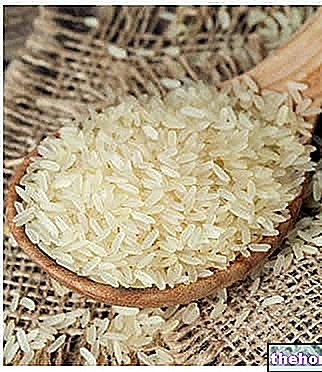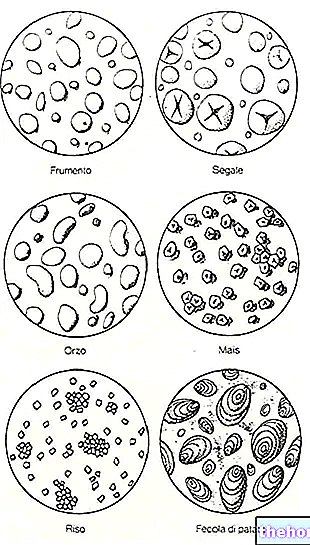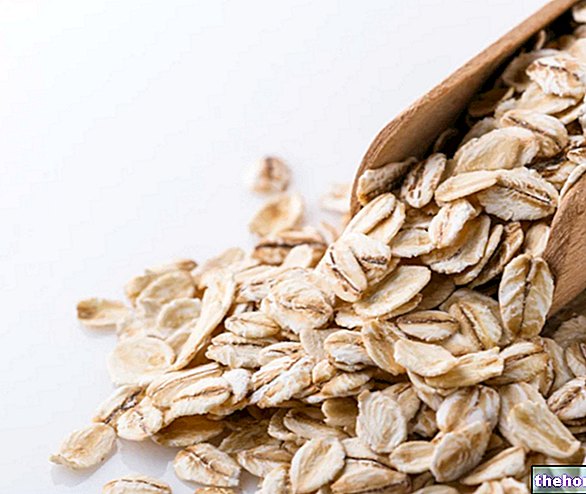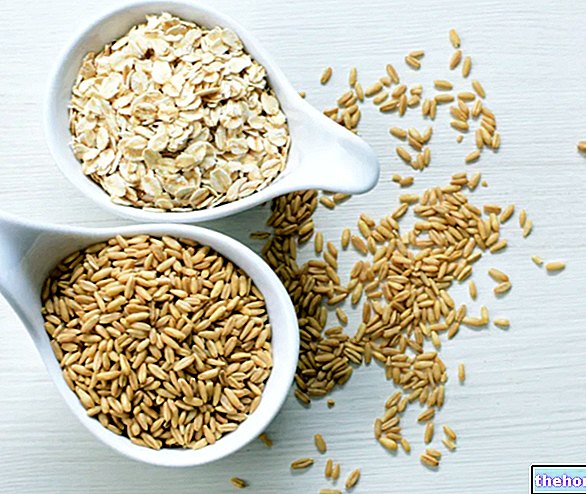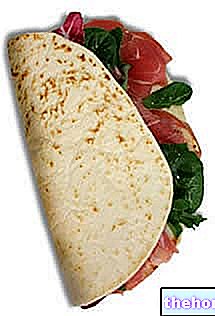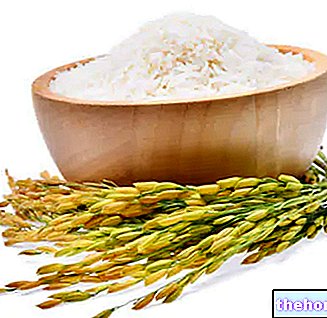Generality
Breadsticks belong to the third group of foods, which includes cereals and their derivatives but also tubers (bread, wheat, breadsticks, rusks, crackers, pasta, rice, barley, oats, tapioca, potatoes ...). Very similar to bread, breadsticks represent a typical product of the whole Italian territory, despite their discovery and refining date back to the Turin bakers of the seventeenth century AD.

The term "grissino" was chosen for the strong similarity of the product to the typical bread of the Piedmontese capital: the ghersa. There is also a variety of bread sticks (however officially recognized) which, instead of being worked EXCLUSIVELY "by hand" by rolling and crushing, is also "pulled" longitudinally by machine; ironed breadsticks, which are more suitable for industrial production.
The main ingredients of the breadsticks are: flour (from Triticum aestivum), water, yeast, source of fat (oil or lard) and salt. The percentage of water of the finished product is very limited, the edible portion corresponds to 100% and the energy nutrients are mainly complex carbohydrates and lipids; all this gives the breadsticks a considerable caloric value and a rather high glycemic index.
Preparation of traditional breadsticks
The classic Piedmontese breadsticks, the smooth ones to be clear, are based on:
- Soft wheat flour type 00: 480g
- Water: 220ml
- Extra virgin olive oil: 75ml
- Brewer's yeast: 15g
- Malt (alternatively honey): 12g
- Salt up: 10g
- Granulated sugar: 3g
- Durum wheat semolina: QB.
recipe extrapolated from: "If you want to be cool, use shallots"- Carlo Cracco - Rizzoli
The procedure is quite elementary, but this does not guarantee the success of the breadsticks; first of all it is essential to have a room / bedroom with a good humidity level, a pastry board or a wooden table and, possibly, a minimum of "manual skill" in preparing the leavened dough. In the order:

Nutritional values (per 100 g of edible portion)
Dissolve the yeast with the lukewarm water and oil; form a fountain with the flour, malt, sugar and salt, then mix together with the water with yeast and oil (or use a mixer for 10 minutes); when the dough is smooth, sprinkle the table or the table with semolina pastry board and place the dough to divide it into 3; with each piece, form a long and narrow loaf, about 15cm high; polish with oil and let it rise for 40 "at a temperature above 22 ° C but below 40 ° C ; Then cut the loaves into long and thin sticks, maximum half a centimeter wide; with both hands, take each stick and pull the ends to the desired length; the future breadsticks will then be placed on a perforated baking sheet (or with non-stick paper ) and cooked in a preheated oven at 190 ° C for 10 "; remove from the oven and leave to cool. Do not keep the breadsticks for more than 2 days.
Nutritional characteristics
As anticipated, breadsticks are foods with a high energy value, rich in complex carbohydrates, poor in water and with a good supply of lipids. These characteristics make them unsuitable for the diet for the control / reduction of overweight and for the hypoglycemic diet used in the treatment of diabetes and hypertriglyceridemia.
Using vegetable oil rather than lard, it is possible to eat products containing unsaturated fats and cholesterol-free, therefore suitable - with due moderation - for the diet of those suffering from hypercholesterolemia. To increase the amount of proteins and good polyunsaturated fats, it is possible cover the breadsticks with vegetable seeds, such as those of sesame or poppy, which however also increase their energy intake
The proteins are contained in discrete quantities and are of medium biological value.
The content of dietary fiber varies according to the type of flour used, but the breadsticks always contain a satisfactory concentration.
ATTENTION! The breadsticks purchased may contain lipids of a lower quality than extra virgin olive oil. Hydrogenated fats or in any case of tropical origin are frequently used; the latter, if rich in generally saturated or hydrogenated fatty acids, are metabolically less healthy due to the negative effect which exert on bad cholesterol (LDL) levels.
It is likely that breadsticks contain excessive amounts of sodium, a disadvantage in case of arterial hypertension.
Homemade Torinese breadsticks
Follow the video of the recipe
Hand-stretched Turin breadsticks
Problems with playing the video? Reload the video from youtube.
- Go to the Video Page
- Go to the Video Recipes Section
- Watch the video on youtube
Other Cereals and Derivatives Amaranth Wheat starch Corn starch Rice starch Modified starch Oat starch Bulgur Whole grains Corn Flakes Crackers Oat bran Bran Cus cus Amaranth flour Oat flour Buratto flour Spelled flour Buckwheat flour Corn flour Corn flour Millet Barley flour Quinoa flour Small spelled flour (Enkir) Rice flour Rye flour Sorghum flour Flour and semolina Whole wheat flour Manitoba flour Pizza flour Spelled Rusks Focaccia Nuts Wheat or wheat Wheat germ Burnt wheat Buckwheat Breadsticks Oat milk Rice milk Corn Maizena Malt Millet Muesli Barley Stale bread Unleavened bread and Pita Bread Carasau bread Egg pasta Rice pasta Wholemeal pasta Piadina Small spelled Pizza Pop corn Baked goods Quinoa Rice Basmati rice Converted rice White rice Rice Wholemeal Parboiled Rice Puffed Rice Venus Rice Rye and Horned Rye Semolina Semolina Sorghum Spaghetti Spelled Teff Tigelle Triticale OTHER ARTICLES CEREALS AND DERIVATIVES Categories Food Alcoholics Meat Cereals and derivatives Sweeteners Sweets Offal Fruit Dried fruit Milk and derivatives Legumes Oils and fats Fish and fishery products Salami Spices Vegetables Health recipes Appetizers Bread, Pizza and Brioche First courses Second courses Vegetables and Salads Sweets and Desserts Ice creams and sorbets Syrups, liqueurs and grappas Basic Preparations ---- In the Kitchen with Leftovers Carnival Recipes Christmas Recipes Dietary Recipes Light Recipes Woman's Day, Mother's Day, Dad's Day Functional Recipes International Recipes Easter Recipes Recipes for Celiacs Recipes for Diabetics Holiday Recipes Valentine's Day Recipes Vegetarian Recipes Protein Recipes Regional Recipes Vegan Recipes

